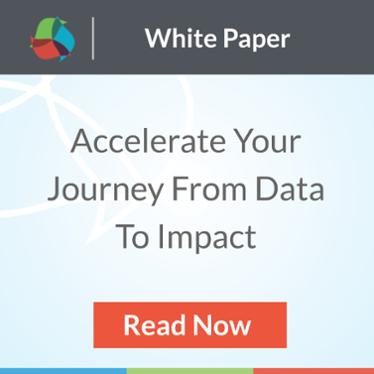
First off, what does it really mean to be data-driven? And secondly, how do you get there? Two great questions I’ve thought a lot about. In fact, I asked folks from more than 100 foundations the same questions.
Several themes developed and a roadmap of proven strategies emerged. Of course, given the variation in each foundation’s unique challenges, a one-size-fits-all approach would be doomed from the start. This doesn’t mean we can’t all begin the journey to impact. It’s never too late – or too early – to start.
How to begin.
You can’t get to where you want to go if you don’t know where you’re starting. You need to ask yourself, as a foundation, “Where do things stand now?” The best way to do this is by conducting a data assessment. The assessment will help you understand which data and metrics you currently collect — including where they come from, how they are used, and what systems are in place to analyze and present them.
<<To help you with your data assessment, I’ve created an Assessment Workbook within the short guide, Foundations: Accelerate Your Journey From Data to Impact. Download it here.>>
How you get there.
How does change occur? It’s the most basic question a grantmaker can ask and cuts right to the core of why it is you do what you do. It’s a simple question, but a fundamentally important one. Developing a strategic framework can help you get to that answer. First start with a theory of change, or a bird’s eye view of your goal: "By tutoring kids struggling in math and reading, we will improve academic achievement." Then develop your strategic framework or logic model, which explains how you’re going to achieve what you set out to achieve. Identify the specific outputs, like number of hours of tutoring offered and the intended outcomes, like percent increase in course completion and graduation rate, and create a process for measurement, learning and improvement around those data points.
How you know what’s working.
Are you making a difference? Without an evaluation plan you won’t be able to answer these questions and you’ll have no idea if all your hard work is moving the needle. An evaluation plan will not only allow you to see if your efforts are paying off, but will also demonstrate opportunities where framework components can be tweaked or optimized for better results.
How other people know what’s working.
If you work in a vacuum, you won't get the most from your data. As a foundation, you must establish systems for sharing your data. The reality is that staff are often connected to the work of colleagues in other departments. The ability to easily share data is not only critical for learning and informing one another’s work, but also in alleviating the duplication of efforts and resources.
Remember, becoming data-driven is not about the destination; it's about the journey. Each step along the way is a milestone toward progress on your journey, so don't get stuck. Try different combinations of approaches. Pick and choose what works for your team now. To paraphrase the Taoist philosopher Lao Tzu, the journey to impact begins with just one step.
Dive deeper into each step of the journey to becoming data-driven – and access our Assessment Workbook – in our short guide, Foundations: Accelerate Your Journey From Data to Impact. Download it here!
